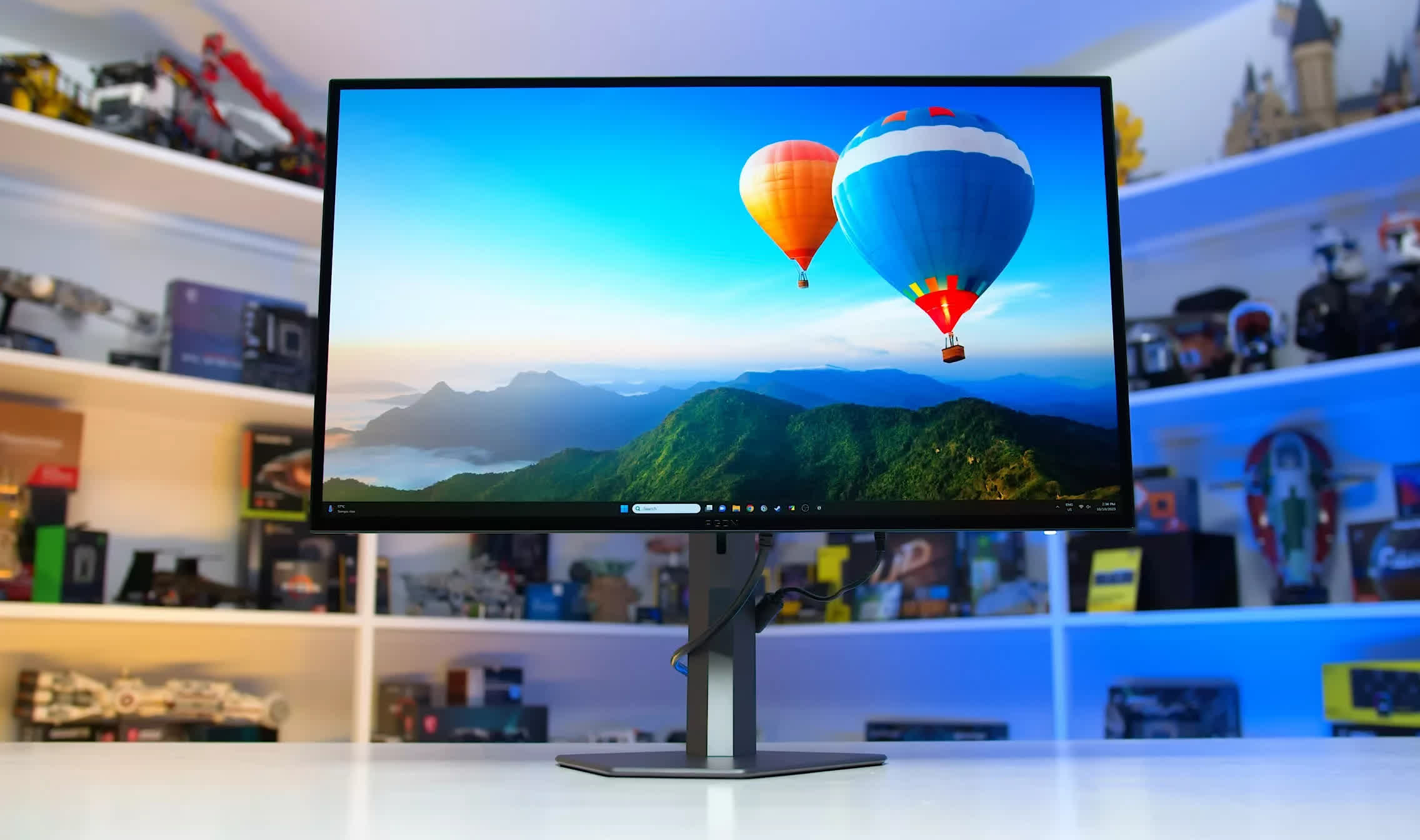The Asus ROG Swift OLED PG27AQDM is the best premium 1440p 240Hz monitor and is also one of the overall best 1440p displays. It’s perhaps a contender for best gaming monitor you can get, period. It brings with it a 27-inch 2560 x 1440 WOLED panel at a 240Hz refresh rate. This is an excellent high-end display, offering elite speed for competitive gamers and stunning HDR visuals for single player gamers in the one package.
The main reason why you’d purchase an OLED like this is for its HDR performance, and this Asus monitor delivers with noticeably higher brightness compared to the four other variants we’ve tested so far that use the same panel. We see up to 900 nits of brightness in HDR content which when combined with the deep zero-level blacks of OLED, result in a super high contrast ratio, and per pixel dimming – leads to a stunning HDR experience that looks fantastic while gaming. It’s also capable of 250 nits of brightness for SDR content, much higher than most other WOLED monitors we’ve tested.
With a 240Hz refresh rate, the Asus PG27AQDM is also capable of elite motion clarity. While gaming at 240Hz, it looks clear and smooth, thanks to lightning-fast response times. A 240Hz OLED is roughly equivalent to a 360Hz LCD in terms of clarity, and OLEDs are able to deliver the same response performance at all refresh rates, leading to an artifact-free experience, even when gaming at, say, 100Hz. This gives this display a rare combination of motion clarity and visual quality that you don’t get from other products. This is one of the few monitors that can deliver a top tier experience in both HDR and motion in the same package.
Other benefits from this Asus OLED include excellent viewing angles, a great build quality with no obvious fan noise, a nice wide color gamut, and of course, adaptive sync support. It is expensive at $1,000 and these days it’s the most premium of the 1440p 240Hz OLEDs, but given the extra brightness Asus provides for HDR, we feel the premium is worth it for high-end shoppers.
The key issue with getting an OLED is desktop/productivity usage. The Asus PG27AQDM is not well suited to productivity work or desktop apps due to its non-standard subpixel layout, which causes text rendering issues; as well as its risk of permanent burn-in while viewing static content. Neither of these drawbacks are of any concern while gaming or watching videos, but right now OLED isn’t well suited to desktop tasks, so if you are planning on doing a lot of that, we’d grab something else.

If you want what the Asus PG27AQDM provides in terms of its OLED panel but you don’t quite have the cash to spend, the AOC AG276QZD is a decent alternative for $800. It isn’t as good, in particular its HDR brightness is lower than what Asus provides, but it does use the same LG OLED panel meaning, so delivers all the same OLED benefits like elite response times and per pixel local dimming.
As of writing, $800 is the lowest you will find for a 1440p OLED and the AOC performed well in our testing, with a few minor annoyances here and there. We feel the 20% discount relative to the Asus is fair, so it’s a product to consider if you don’t want to stretch the budget all the way up to $1,000.

